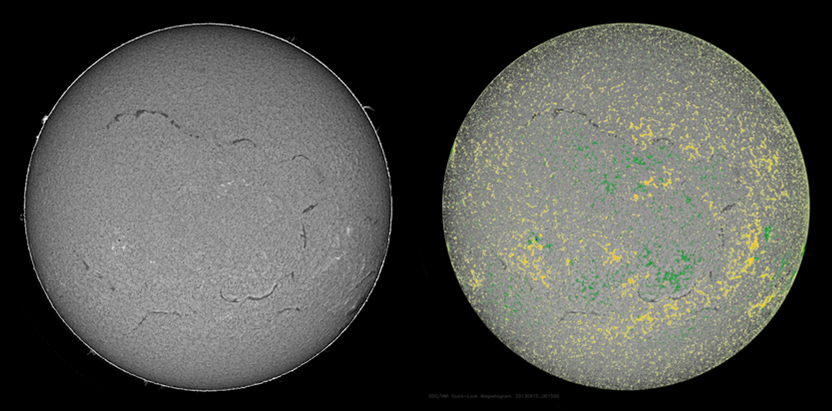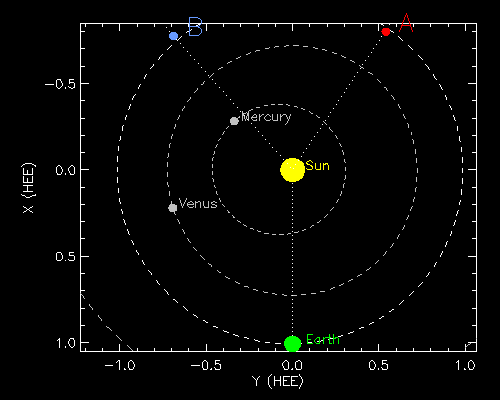A quite impressive filament eruption took place on the Sun's backside on 11 September (see this movie). Solar filaments are clouds of ionized gas above the solar surface squeezed between magnetic regions of opposite polarity. Being cooler and denser than the plasma underneath and their surroundings, they appear as dark lines when seen on the solar disk using special filters.

The picture above on the left dates from 15 September and shows a lengthy filament structure as seen in the light of Hydrogen-alpha (H-alpha), which provides a view on the "cool" chromosphere of the Sun. The picture above on the right shows the same feature, this time in combination with an overlaid SDO magnetogram. Green is positive polarity (magnetic field lines coming out of the solar surface), yellow is negative polarity (field lines returning to the solar surface). Clearly, there's a huge filament structure caught between the various fields of opposite polarity. It has the shape of an inverted "c" (its opening is to the left) and is stitched together from filamentary chunks as it is meandering between the magnetic fields, active regions and coronal holes.

This big structure exists already for one solar rotation, starting to form around 20 August while rotating out of view and over the Sun's west limb (as observed from Earth). As it transited the backside of the Sun and became visible for resp. STEREO-A and STEREO-B, the structure could clearly be seen and remained well visible for the rest of the solar rotation. See this movie, as well as the picture above. Note the STEREO-images depict the Sun in extreme ultraviolet (hot inner atmosphere). Here, the active regions show up as bright areas, while coronal holes show up as dark patches (especially the big one near the upper right corner). See the annotated STEREO-B image underneath. Coronal holes are not visible in H-alpha.

The filament eruption concerned only the end of the southern part of the filament structure, as indicated by a purple ellipse on the image above. Its length is still a respectable 450,000 km, a bit more than the average Earth-Moon distance. The eruption occurred during the morning hours of 11 September. It produced a typical coronal mass ejection (CME), with a bright leading loop, a dark cavity and a dense filament core. The image underneath shows the CME at around 10:30UT, as seen by STEREO-B, SOHO and STEREO-A (left to right).

From these different vantage points, the CME had quite a different outlook. Indeed, as the eruption took place in the direction and to the south of STEREO-B, its coronagraphs showed a wider filament core than those on SOHO and STEREO-A, which observed the propagating CME near resp. the east and west limb of the visible solar disk. See the sketch underneath for the different vantage points of the satellites at the time of the eruption.

Credits - Data and imagery for the movie clips were taken from the GONG H-alpha network, SDO, STEREO, and SOHO/LASCO.
 |
 |





